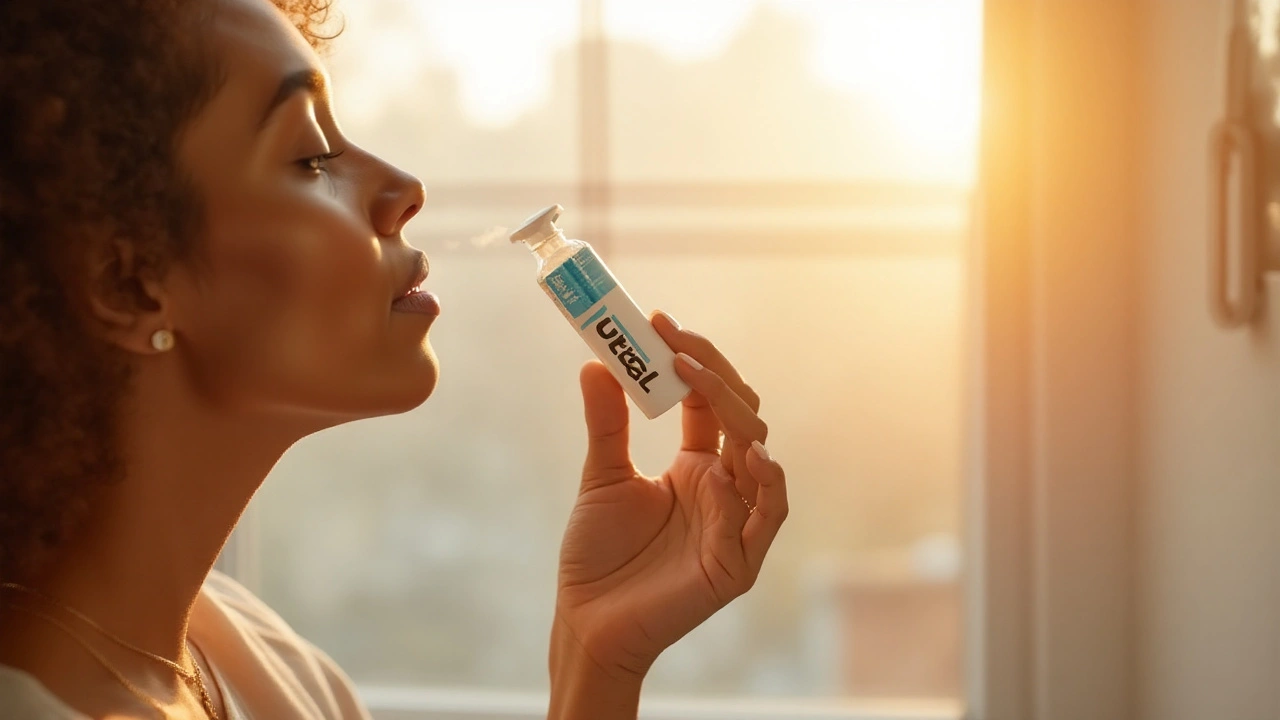If you’ve ever dealt with stubborn nasal congestion, itchy sneezes or a chronic runny nose, you’ve probably heard of a nasal steroid. Budesonide nasal spray is one of the most popular options. It’s a prescription‑only medication that delivers a low dose of steroid directly into your nose, helping to calm inflammation where it starts.
Doctors usually prescribe it for allergic rhinitis (seasonal or year‑round allergies) and for nasal polyps that keep the sinuses blocked. Because the spray works locally, you get relief without the systemic side effects you might see with oral steroids.
Getting the right technique makes all the difference. First, gently blow your nose to clear any mucus. Then, shake the bottle and prime it – usually two sprays if it’s brand‑new or hasn’t been used for a week.
Lean your head slightly forward, insert the tip about half an inch into one nostril, and close the opposite nostril with a finger. Aim the spray toward the outer side of the nostril (away from the septum) and press down once while breathing in gently. Repeat in the other nostril if your doctor said to use both sides.
After spraying, avoid blowing your nose for a few minutes. This gives the medication time to stick to the nasal lining and work.
Most people feel relief within a week or two, but don’t expect instant miracles. If symptoms persist after four weeks or get worse, book a follow‑up. Also, call your doctor if you notice any of these red flags: nosebleeds that won’t stop, severe headache, vision changes, or signs of an infection like fever.
Because budesonide is a steroid, long‑term use may thin the nasal lining. Your healthcare provider might suggest a break or lower the dose if you need it for months.
Typical dosage for adults with allergic rhinitis is one spray (50‑100 mcg) in each nostril once daily. For nasal polyps, the dose can be two sprays per nostril daily, but always follow your prescription.
Side effects are usually mild. The most common complaints are nasal irritation, a slight bitter taste, or occasional nosebleeds. If you experience severe irritation, a sore throat, or coughing, talk to your pharmacist about trying a different nozzle or a rinse.
Storage is simple: keep the bottle at room temperature, away from direct sunlight. If you haven’t used it for a week, prime it again before the next dose.
When you’re ready to buy, look for reputable online or brick‑and‑mortar pharmacies. Always have a valid prescription; buying without one risks counterfeit products and legal trouble.
In short, budesonide nasal spray can turn a miserable, stuffy season into a manageable one. Follow the proper technique, stick to the prescribed dose, and keep an eye on any side effects. With the right approach, you’ll breathe easier and get back to living normally.

Learn what Rhinocort is, how it works, proper dosing, common side effects, and practical tips for safe use. A clear, up‑to‑date guide for anyone considering this nasal spray.
Read More